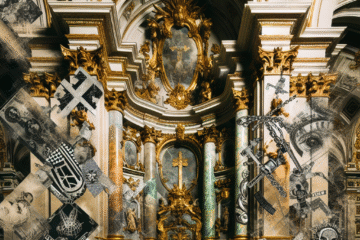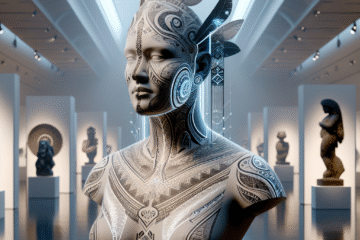From the paint-splattered walls of 17th-century ateliers to the immersive installations of today’s visionaries, the artist’s studio has long been more than a mere room—it is a sanctuary where gestures become history and sparks of imagination ignite revolutions. The studio, whether sparse or elaborate, reflects the psyche of its inhabitant and becomes an extension of their creative world. In this exploration, we delve into the evolution of the artist’s studio across five eras, revealing how both interiors and ideologies have shaped the making of masterpieces.
Chapter 1: Renaissance Workshops – The Birth of the Studio as Institution
Before the studio became synonymous with solitary introspection, it was the heart of a bustling artistic enterprise. During the Renaissance, workshops like that of Andrea del Verrocchio in Florence functioned as both training grounds and production centers. Young apprentices, including a young Leonardo da Vinci, ground pigments, stretched canvases, and assisted in executing commissions under the master’s eye.
These spaces emphasized collective effort. Art was largely a commissioned service, and the studio served as a semi-industrial space geared toward efficiency and replication. Yet, within these confines, innovation thrived. The early stirrings of humanist philosophy and an increasing interest in individual genius began to reshape how artists approached their craft—and their workspace.
Chapter 2: The Baroque Atelier – Shadow and Light in the Artist’s Domain
By the 17th century, the studio had become both a functional workplace and a symbolic expression of the artist’s identity. Rembrandt’s atelier in Amsterdam epitomized this shift. His studio, situated in his home on Jodenbreestraat, balanced public and private personas. A front room welcomed patrons and showcased artworks, while a rear chamber served as the true locus of creativity—a place of solitude, experimentation, and introspection.
Here, Rembrandt manipulated light not only on canvas but within space, exploiting windows and shadows to stage dramatic effects. He filled his studio with curiosities—armor, skulls, textiles—which infused his paintings with symbolic weight and atmospheric depth. The Baroque studio, thus, emerged as a personal theater of imagination, reflecting both the artist’s hand and spirit.
Chapter 3: The Romantic Refuge – Solitude and the Myth of the Genius
The 19th century brought a pivotal transformation: the studio as a romanticized retreat. As academic traditions clashed with emerging avant-garde ideas, artists began to claim their studios as personal sanctuaries against a rapidly modernizing world. Eugène Delacroix’s Paris apartment-studio brimmed with color, books, and Orientalist memorabilia, echoing the painter’s inner world and philosophical leanings.
This era valorized the image of the artist as a tormented genius. The studio became almost monastic, a place of artistic pilgrimage and introspection. The rise of realism, Impressionism, and later Symbolism further decentered formal academia and opened new aesthetic dialogues within increasingly individualized studio spaces. Technology, such as portable paint tubes and improved lighting, gave unprecedented freedom to artists, both within and outside their studios.
Chapter 4: The Modernist Laboratory – Form, Function, and Industrial Influence
In the 20th century, as mass production and technological progress redefined daily life, artists began to reimagine the studio as a laboratory. Take Pablo Picasso’s iconic Rue des Grands-Augustins studio in Paris—a ramshackle space filled with canvases, sculptures, and clutter. To Picasso, the chaos was generative; the studio was a site of deconstruction and invention, where Cubism was born and redrawn daily.
Meanwhile, movements like the Bauhaus embraced clean, modular environments where form met function. The studio’s aesthetic reflected its ideology—rational, disciplined, collaborative. Influences from photography, printmaking, and architecture permeated these modern studios, underscoring the artist’s role not just as a creator but as a designer embedded in industrial society. The studio became a crucible of modern thought, shaped by new materials and machines.
Chapter 5: The Contemporary Studio – Immersion, Identity, and the Expanded Field
In the contemporary era, the artist’s studio is more mutable and experimental than ever. The concept now thrives across mediums and geographies—from digital setups in urban lofts to ephemeral pop-ups in public spaces. Among the most iconic is Yayoi Kusama’s studio environment, a comprehensive polka-dotted universe reflecting her lifelong hallucinations and meditations on infinity. Her studio doubles as a psychological space, manifesting obsessive patterns and spiritual motifs in every object.
Contemporary artists often blur the lines between studio, gallery, and installation, challenging traditional boundaries. Some, like Ai Weiwei, turn their studios into political platforms, while others, such as Olafur Eliasson, operate interdisciplinary labs combining art, science, and activism. The influence of digital technology has also ushered in virtual studios, collaborative platforms, and AI-generated works, further pushing the concept of ‘studio’ into abstract realms.
Today, the studio is not merely a container of creativity—it reflects the complexities of identity, memory, and culture. It is sacred not by design, but by devotion. In visiting the sanctuaries of past and present creators, we glimpse the silent rituals that birth the extraordinary.


